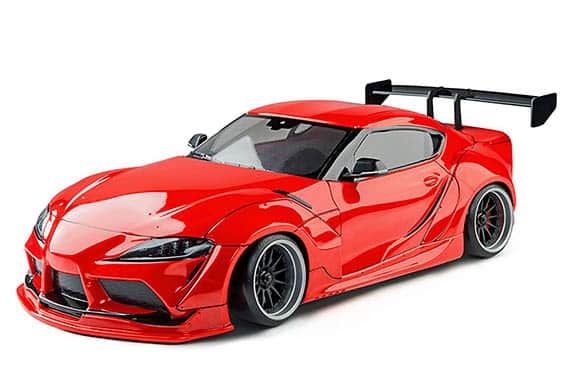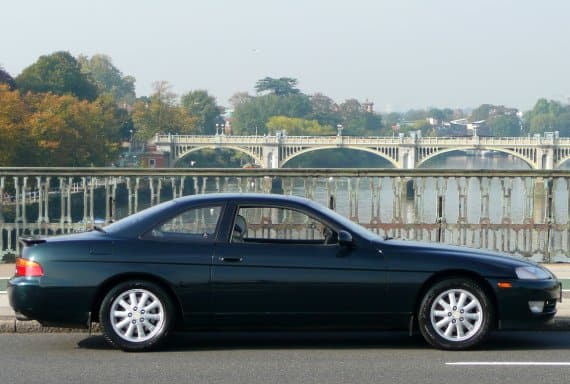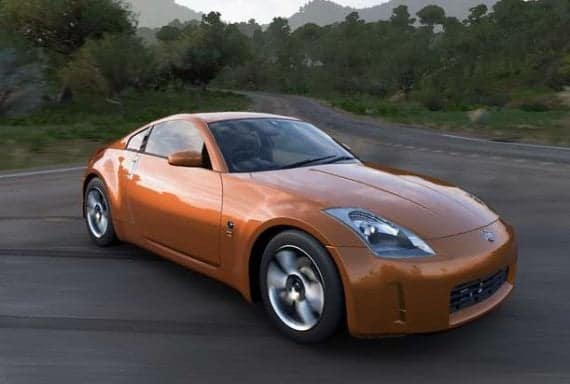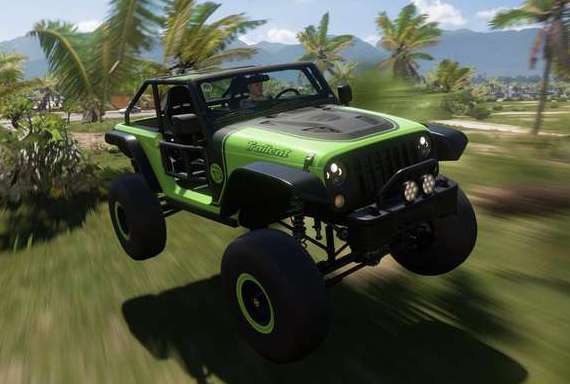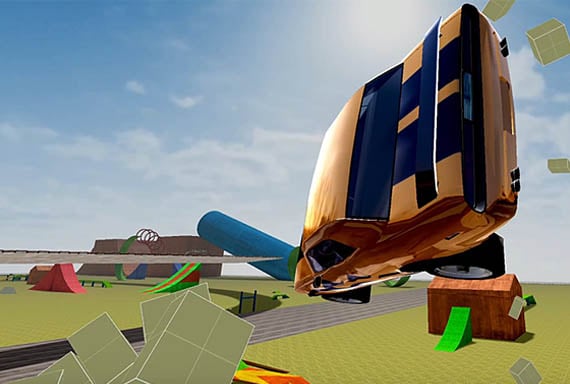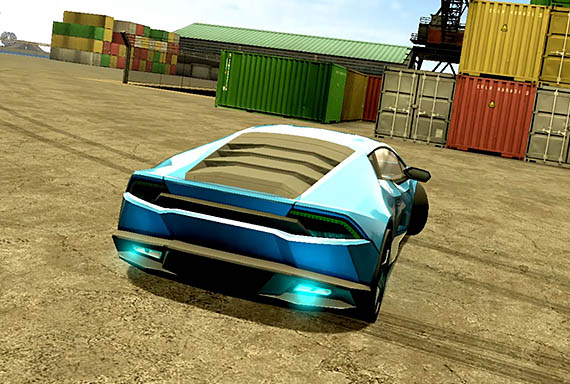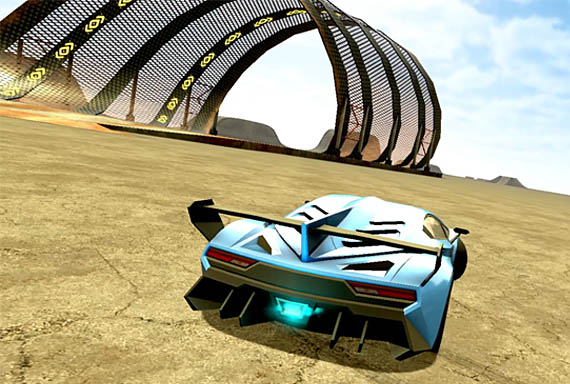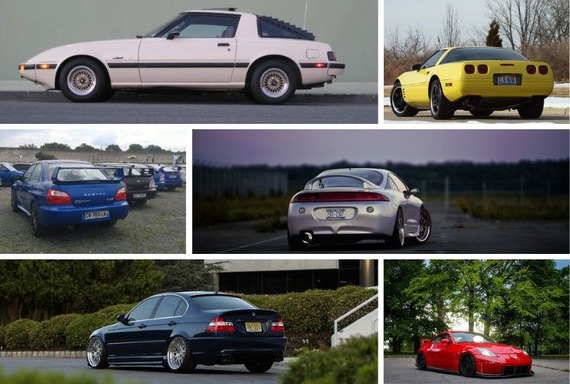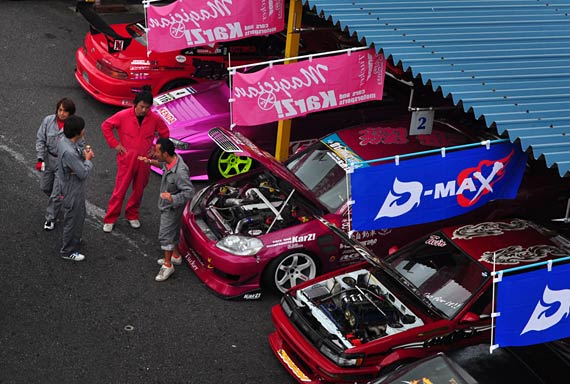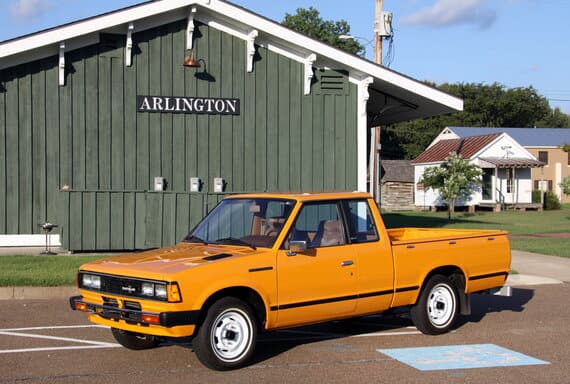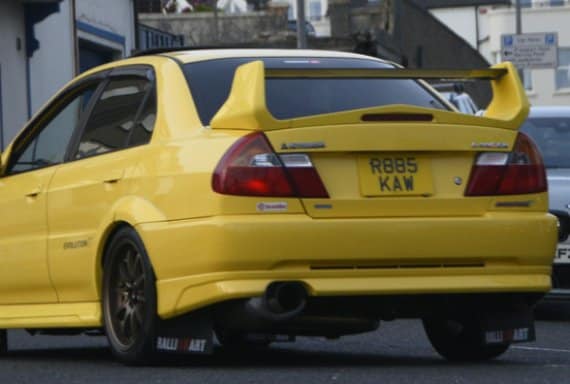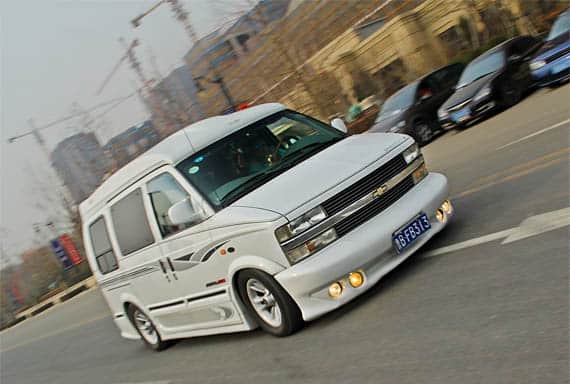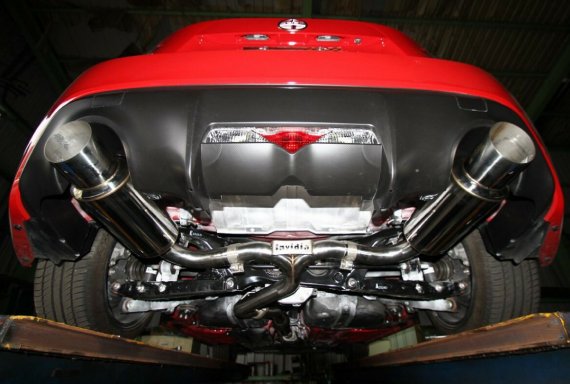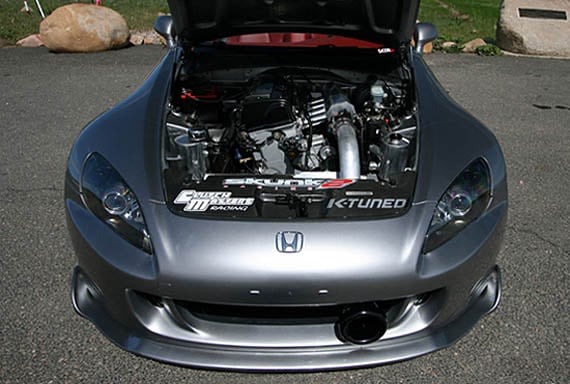How To Drift – The Complete Guide
Looking to get into the drift scene but have no idea where to start? Or perhaps you’re struggling with a certain aspect or just looking to improve your skills? We’ve got you covered in our drifting guide.

- What do I need to start drifting?
- Preparing a drift car
- How do I drift my car?
- The art of drifting - The Four Main Steps
- Weight transfer explained
- Advanced/alternative initiation and drift techniques
- Conclusion
What do I need to start drifting?
So, you’ve watched the YouTube videos, you’ve seen the photos of your buddies having the time of their lives throwing their car down sideways at the local track and now it’s time for you to also fill that void in your life with some controlled insanity?
Awesome!
Drifting is undoubtedly the most fun you’ll have behind the wheel of the car for the money, and we’re going to show you exactly what you’re going to need as we prepare to teach you how to slide your rear bumper along walls with confidence..
Well, eventually anyway!
To begin with, let’s keep things simple. The ideal way to learn the traditional drifting methods will simply require a manual transmission, rear-wheel drive car. It doesn’t matter if you don’t feel you have enough power, chances are that if you push it hard enough you’ll be surprised at what can be achieved.
If you’re stuck with an automatic gearbox, fear not, it’s still possible. However, a manual will undoubtedly provide you with the ultimate drifting potential.
We’ve seen the Facebook arguments about how the local hero in his Honda Civic is claiming to be the latest FWD drifting sensation, however, for today we’ll be focusing on the RWD platform.

We appreciate that there’s a lot to take on initially in this guide, however, the best thing to do is to take your own notes, and most importantly take action. Once you’ve adapted to throwing the back-end out, not only is it an intense thrill, it also gives you far more driving knowledge and confidence.
The basics of throwing the back end out are surprisingly simple once you have the hang of it and unlike other forms of motorsport, advanced techniques such as heel/toe are not an essential requirement. Basic knowledge of counter-steering, manual transmission, and throttle control are undoubtedly going to help you on your journey.
For some inspiration, check out two of the best drivers in the world going head-to-head in this epic touge video:
You’ve undoubtedly witnessed the pro’s throwing down backward entries on the track at 120mph, but to begin with, we’re going to simply find a safe area with no objects, or friends to hit. You’ll be amazed at how much fun can be had at just 40mph!
We now prepare to venture through the basics, before then going on to attack the advanced drifting methods.
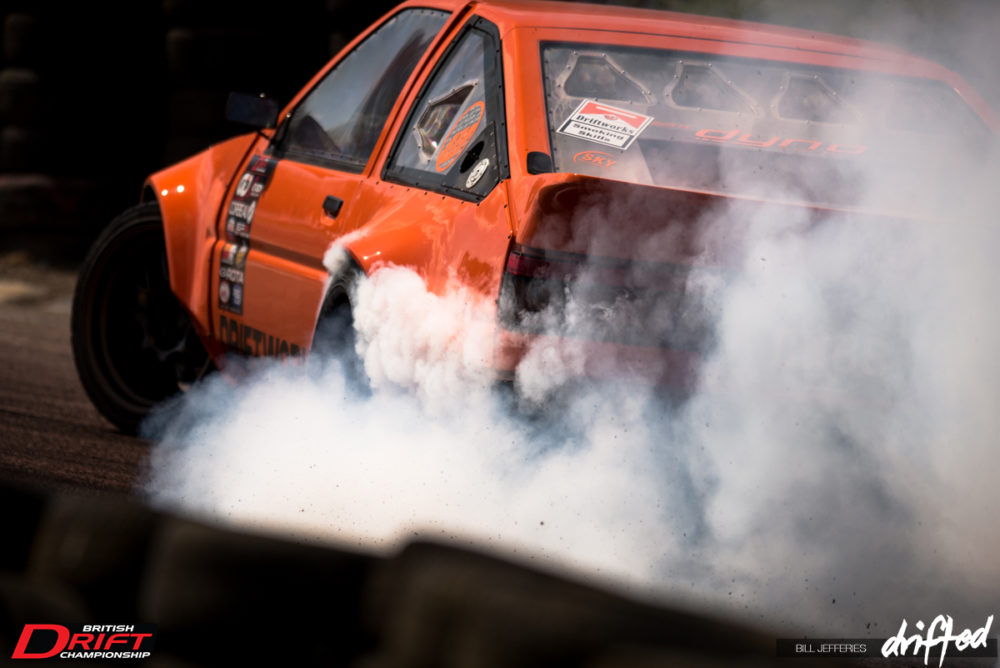
Preparing a drift car
We’re going to assume that if you’re reading this, you’re most likely going to be practicing in a stock, low-powered car. If you’ve got a competition-ready drift weapon, chances are you’ve already got these boxes ticked!
Basic requirements
1 – A rear-wheel-drive car.
2 – Adequate power – a minimum of 100hp is recommended. Consider adding some bolt-on modifications to allow the car to breathe and provide better cooling.
3 – Preferably a manual gearbox, not just for selecting the ideal gear, but for clutch control too.
4 – The ability to turn off all driving aids and assists, such as traction or stability control, assuming your car has them.
5 – A pair of cheap rear tires, or decent ones if you have the money to burn!
6 – Preferably a limited slip differential, or a welded stock differential. You’ll be able to use the stock diff to some extent, but it these will undoubtedly help.
Looking to pick up your first drift car but on a tight budget? Try our ultimate cheap drift car roundup!
If you decide to get serious and build a drift-spec car, we highly recommend considering a series of relatively simple bolt-on modifications such as coilovers and an exhaust. We have a huge selection of tuning guides based on most drift cars, which can be found here.
To give you an idea of how drift look when they’re pushed to their limits, this incredible video from Gunsai Touge shows a tight and twisty Japanese mountain road.
Suspension
Drifting on the stock suspension is, of course, possible, but coilovers are going to give you the ultimate setup for drifting and we would undoubtedly purchase a set, even budget ones will drastically improve the body-roll that you’re undoubtedly going to be struggling with.
Since coilovers are adjustable, you’ll also be able to adjust the ride height, tweak the damping, and a decent set will also allow for camber adjustments to provide maximum grip, reduced understeer, and sharp steering response.
Additional handling modifications such as stiffer anti-roll (sway) bars, particularly in the rear, will stiffen up the back end of the car to provide good turn-in and reduce understeer.
Find the perfect set of coilovers for your car in our tuning guides!
Engine and drivetrain
There’s no question that drifting is going to put the car under a lot of strain. You’re essentially using it to its limits in pretty much every way. For that reason, breathing and cooling mods should definitely be high up on your to-do list if you’re intending on drifting frequently.

Cooling upgrades such as an upgraded radiator, front mount intercooler, and oil coolers should be considered to keep the temperatures down, especially for those of you living in warmer climates.
Limited slip differentials are highly recommended to get the ultimate car control, but for those of you on a budget, you’re ideally going to want to weld up your stock diff so that both rear wheels are working together to keep the car sideways.
Clutches are always an ideal upgrade. Chances are that your current one has been in the car for quite some time, and quite possibly had a rather harsh life. Depending how much drifting you intend to do, we’d strongly consider going with an upgraded version which is capable of handling some kicking.
Exhausts and breathing modifications will allow you to squeeze some additional valuable horses out of the engine, and also ensure that it’s breathing as freely as possible with as little restriction as possible.
Tires
For those of you with low-powered cars on a budget, some part-worn tires may well be all you need. However, for basic use, we generally buy some cheap rear tires and opt for some decent spec tires on the front for maximum grip.
You’re going to be shredding your way through the rears, but not the fronts. If you’re driving in a high-powered car, you’re going to want to consider tires with decent grip, or semi-slicks for the ultimate setup.
Tire pressures also play a big part on how easily the back-end steps out, so if you’re finding it difficult to initiate with your setup, consider putting some more pressure in the rear tires. This is extremely likely on lower-powered cars.
On the flip side, if you’re feeling like you don’t have enough grip, which is likely with a high-powered setup then you’re going to want to consider lowering the pressures until you reach the optimum grip levels.
How do I drift my car?
Good question! As you probably guessed, this isn’t going to be answered in a single sentence so we’re going to break it down as simply as possible so that it’s simple to implement the steps when it comes to taking action.
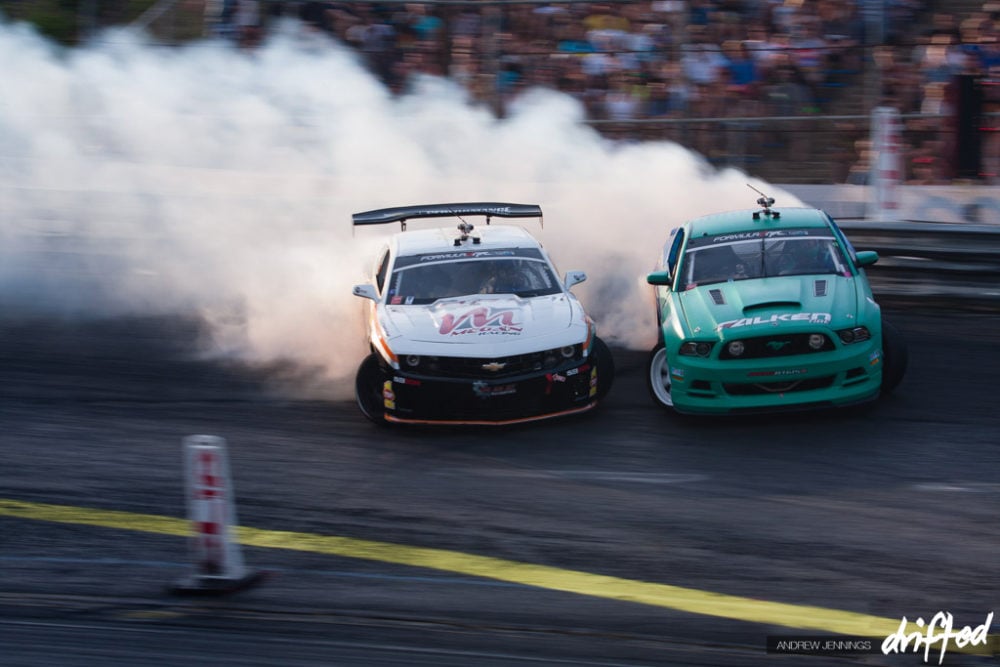
Now that you’ve ticked off the basics above, you’re ready to head to a large open space to perfect your driving ability. Please don’t head straight out trying to be a hero on the street, this rarely ends well for you, or your car.
We highly recommend watching some videos on YouTube or similar platforms to pick up the basic drifting methods. It’s often a lot easier seeing the techniques being put into practice than reading about them. Remember that our guide will make for a great handbook to keep in your car, or revisit on your phone for those moments when it all becomes a bit confusing though!
Who better to learn from than the founder of drifting, Keiichi Tsuchiya? In his ‘Drift Bible’ video, the Drift King provides the ultimate guide to show you the basics, right the way through to advanced drifting methods. Don’t worry if your Japanese isn’t quite perfect as this video has an English soundtrack.
Be prepared for drifting to feel extremely unnatural and frustrating at first. It goes against your typical driving knowledge and methods which you’ve gained over the years. This is likely to be the first time you’re utilizing weight shifting, counter steering and constantly applying excessive amounts of throttle. Fear not, as these things eventually make driving far more exciting than ever once you get the hang of it!
When you get to the point of telling your car to drift, and you can confidently maintain that drift, it’s an insanely satisfying feeling. If your car one day decides to unexpectedly display some ass-out intentions, you’ll feel far more confident than ever, even in tricky situations on the street, that you can safely avoid hitting everything in sight.
The best way to begin is to learn first-gear donuts and perfecting the basic art of car control. After this, you can begin trying transitions with figure-of-eights before calmly exiting the drift.
Practicing this, with a few added curse words into the mix, will eventually provide you with a confident feel for the car. Once your feet and hands are perfectly synchronized with the abnormal feeling of being sideways, you’ll feel like you’ve mastered it, only for the back end to slide away on you again!
Remember that pedal and wheel control is never a single motion. You’re not simply smashing the throttle to the floor, throwing the car full lock and magically turning into a drifting legend, unfortunately.
Some of the worlds most talented drivers throw down some incredible laps as Naoki Nakamura’s Team BURST tandem at Japan’s infamous Meihan Circuit:
You need to constantly be aware of what the car is doing and implementing small adjustments to the throttle and steering in both directions to achieve the perfect angle and speed. Once you’ve found the perfect harmony between the two, you’ll be surprised how much of an impact the small adjustments can make in your quest to perfection.
Once you’ve got the hang of it, you’ll feel like something just ‘clicks’ in your brain. Like many other routines, your mind adapts to the basics, and before you know it, admittedly after a lot of initial frustration, you’ll be confidently sitting sideways.
Whether you’re struggling with initiation, steering, transition throttle amount or exiting the drift, it’ll all soon begin to make sense as you begin to master the basics.
Once the basic steering and throttle aspects are dialed in, you’ll be ready to move on to precise placement of the car and the more advanced techniques, instead of consuming all of your willpower attempting to avoid the dreaded spin-out.
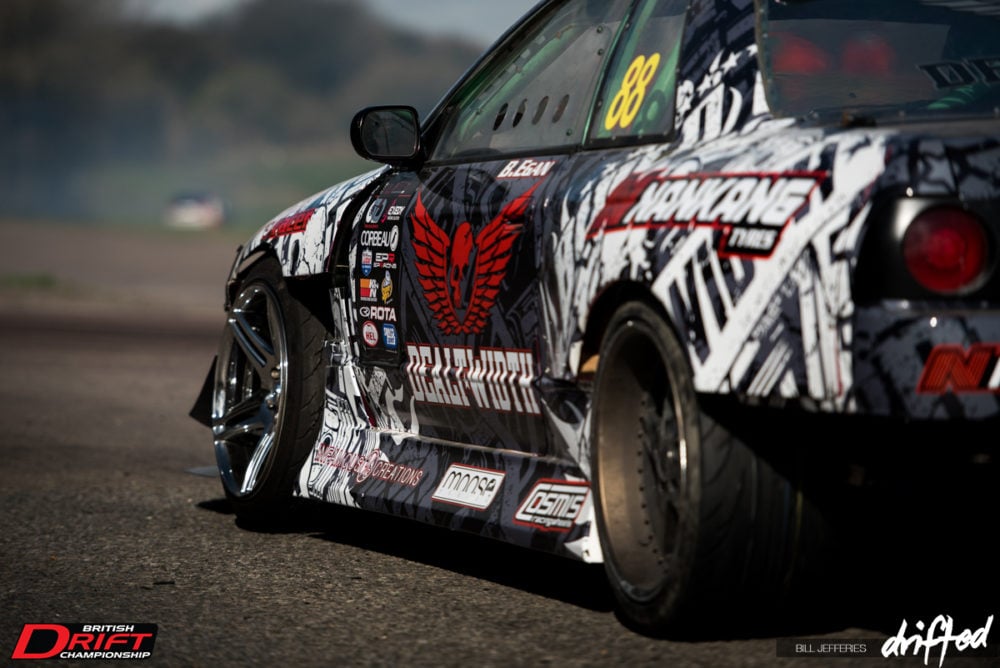
The first basic steps:
Place a traffic cone in the middle of a large, safe area. An open parking lot with permission to carry this out is the perfect location. Head up to the cone at around 30-40mph, yank your handbrake or hydro, and try to get a feel for maintaining a circular donut motion around the cone without hitting it or spinning out.
Once you’ve nailed this without hitting the cone too often, you’ll want to lay another cone a reasonable distance apart and begin doing figure-of-eights. This will be more tricky since you’re now going to be adding a transition into the mix.
At this point, if you’re already taking action and improving in confidence, perfect! We have no doubt you’ll continue progressing with the basics and before you know it, you’ll be ready to head to the next stage, where we go from driving around cones to the exciting, more advanced methods of drifting.
The art of drifting - The four main steps
If you’ve already done the basics, or if you feel you’re ready to conquer the higher speed areas right away, we’re going to move on to the main steps of executing the perfect drift.
This intense Japanese touge battle gives you a fascinating insight into the steering and pedal inputs on a tight track, use this as a guide to make this section make more sense:
1 – Initiation (Starting the drift)
The initiation is arguably the most important part of drifting if you get the initiation wrong, the rest isn’t going to fall into place. It’s going to take time to get right, and it’s undoubtedly going to test your patience, but the reward is well worth the effort.
Your rear tires will grip the road up to a maximum point of grip. Once this is exceeded, the car will begin to slide until the grip is restored. Therefore, learning the grip levels of the car is absolutely vital, and tire pressures will play a huge role in this.
We’ll be using the most common ‘Power Over’ weight transfer method for initiation. We’d recommend using second gear at around 30mph (this will vary depending on gear ratios) to approach a tight corner. Always remember that drifting is not a race and you’re not looking to set Time Attack records.
You’re going to want to break the back end of the car loose by aggressively turning the wheel into the direction of the corner you’re entering whilst suddenly applying substantial throttle. A sharp press the brake pedal, a clutch kick or a quick yank of the e-brake can also help at this point if you’re struggling initially.
Once you feel the back end step out, it’s time to quickly counter-steer into the opposite direction of the corner. At this point, you’ll want to provide even more throttle to allow the back end to continue sliding whilst feeling the weight shift of the car to decide whether you should apply more or less throttle and steering angle. Try to head as near as you can to the opposite lock without spinning out to achieve maximum angle.
After initiation, if you’re too gentle with the throttle, the car will understeer. Alternatively, if you’re too brutal with the steering or using too much brake/e-brake, the car will likely spin out. You want to use soft, smooth driving techniques and feel exactly how the car is reacting to your inputs for the perfect execution. This will undoubtedly come naturally the more you practice.
Once the back end steps out, you’ll need to act quickly and smartly, as the whole process happens extremely quickly. If you get it wrong, you’ll be facing the opposite direction on the track before you know it.
2 – Maintaining the drift
Now that we’ve gained a decent understanding of initiation, you should be capable of bringing the car to the point where steering and throttle inputs will now become essential to controlling the drift through the corner.
By the end of this section, your aim will be to drift through the corner using a smooth arc, following the typical racing line. If you apex too soon, you’ll probably need to end the drift early. Too late and you’ll be on the straight too early and won’t be able to maintain the drift.
Once you’ve initiated, the back end has stepped out, you’ve ‘caught’ the weight shift. It’s now a calculated game between your hands and feet to judge the balance of the rear of the car using gentle, progressive motions to maintain the drift.
Make sure you keep the power on. It may feel surprising initially just how much power is required to sustain the drift, but this is absolutely essential to keep the wheels spinning. Around 80% throttle is the general rule of thumb depending on the power of your car and weather conditions. If it’s wet, or icy, chances are you’ll need far less.
Continue to counter-steer the car through the corner, making small steering and throttle adjustments where necessary to achieve the perfect arc.
If you feel that the car is rotating too far and gaining too much angle, you’ll want to ease off the gas until it’s back where you want it and at the same time, apply additional steering lock in the correct direction before calmly reapplying the throttle once again to find the perfect balance.
Expect to keep the steering wheel moving in both directions as you adjust the throttle. This seems challenging at first, but before you know it, it’ll become second nature.
If you’re struggling to maintain the drift, chances are you’re not applying enough throttle to keep the wheels spinning, don’t be worried to push the car hard.
Alternatively, if you’re spinning out, consider using less steering angle and/or less throttle.
It’s important to remember that you don’t want to be fighting with the wheel. As you increase in confidence, expect to be able to simply release the wheel when the back end slides out, allow the car to rotate and ‘catch’ it at the correct angle before maintaining the drift with calm throttle and steering movements.
If your natural alert instincts kick in, and you lift off the throttle mid-drift, the chances are that you’re going to force sudden grip to the rear tires which will inevitably send you flying in an unplanned direction. Make sure you commit and kept your throttle firmly planted.
A good initiation is extremely important in ensuring that you’re in the correct position for maintaining the drift. Once you’ve got the car sideways with confidence, this is one of the most satisfying elements. It’s an awesome feeling of being in full control of the tire-shredding insanity that’s going on around you.
An advanced technique which you can practice whilst maintaining the drift is to use left-foot braking with your right foot still on the power. This will allow you to perfect your line or speed mid-drift and is a great technique to use in a close chase-run to avoid contact. This will certainly take some adapting to, but if you have the time and space, it’s definitely worth trying!
Eventually, the aim of maintaining the drift will be to consistently throw down runs where you’re repeatedly testing the full steering lock of the car whilst achieving maximum speed.
3 – Transition
Transitioning is one of the most challenging aspects of drifting, and even if you’re now capable of confidently throwing it down into a corner, the chances are that transitioning is waiting to throw a curveball into the mix.
If you’re not sure what a transition is, it’s when you’ve gone around one corner, and now you’re faced with the next corner which is pointing in the opposite direction, which you now need to tackle whilst continuing to maintain the drift. This is where your senses will be tested as you learn more about the weight transfer of your car.
There’s a lot going on, and it all happens extremely quickly!
As you’re maintaining the drift, you see the corner fast approaching and it’s time to shift the weight to force the car to turn in the opposite direction.
From maintaining the drift, add a little more angle into the car if possible, and lift the throttle until you feel the rear wheels grip up slightly and the car begins to turn in the opposite direction. If you’ve mastered letting go of the wheel in the initiation to the maintenance stage, you’ll want to repeat those steps again here to allow the weight shift of the car to take control.
As you feel the weight begin to shift, which will happen extremely quickly, try to catch the wheel at the appropriate time with the back end sliding out. Don’t expect to achieve the perfect angle at this point because you can re-apply your maintenance knowledge to use the calm, yet firm throttle and steering inputs to return to the maintenance stage.
In an S-curve, a short, sharp release of the gas pedal will cause the rear to carry out a pendulum motion, but quickly reapplying the gas pedal firmly and maintaining the throttle after the back end has reached the desired angle will make transitioning make a lot of sense extremely quickly.
These steps will take a lot of practice because transitioning too hard will cause the car to spin, however, if it’s too soft and you don’t get back to re-applying a serious amount of throttle soon enough, you’re likely to switch to understeer.
It’s absolutely vital to remember the mistakes you make so that you can correct them on your next attempt.
4 – Exiting the Drift
Now that you’re confident with initiating, maintaining and transitioning, it’s time to learn how to exit the drift in the correct manner, to prevent any unwanted surprises!
Naturally, your instinct will tell you that you need to lift off the throttle to straighten the car out, but you actually want to maintain or even increase the amount of throttle required whilst turning the wheel and feeling the back end come around to a safe position before gripping up again.
As you feel the correct steering angle returning, slowly ease off on the gas until the car returns to its natural state. The car will want to go back into a straight line again rather than fighting the weight forces.
Keeping the throttle maintained later than expected will keep the weight shifted over the rear wheels to provide stability. If you lift the throttle quickly, the weight of the car will sharply transfer forward which will cause the back end to grip up and snap in the opposing direction, which may cause you to spin out, or worse, crash.
During drifting, the car is fully loaded up and to releases that load as smooth as possible, you need to stay steady on the power, providing enough throttle until the car returns to its natural posture of driving in a straight line.
If you end the drift too quickly, it may lead to ‘fishtailing’ in the opposite direction. Ensure you are easing off the power smoothly whilst turning the wheel to the correct position.
Weight transfer explained
Now that we’ve explained the four key steps to drifting it’s time to learn a little more about an extremely important factor in drifting - weight transfer.

In any car, when you hit the brake pedal hard, you’ll notice that the front of the car dips as the rear of the car raises. With the front pointing towards the ground, more of the mass of the car is over the front axle with far less on the rear.
With more weight now shifted to the front of the car, the rear has less weight, which causes a drastic loss of traction and the rear end will become lively, which can be used to your advantage during the initiation procedure.
Advanced/alternative initiation and drifting techniques
Power-Over
This technique is the one which we used in our ‘initiation’ step above, Power Over is performed when entering a corner, using a substantial amount of throttle to induce heavy oversteer through the turn. You’re going to need to be confident with flooring the throttle to achieve the best out of this method.
Clutch Kick
This technique is performed by harshly performing a ‘kicking’ motion on the clutch pedal and can be used on the initiation. This allows you to get on the gas and lift the revs so that when the clutch returns, it sends a sudden shock of torque through the driveline to cause the rear end to break free.
Clutch kicking is also an extremely useful technique during maintaining the drift for lower-powered cars to regain power as you increase the revs to near the redline with the clutch depressed. If you’re applying enough throttle, but you can feel the car lacking with power, kick the clutch to attempt to force the wheels back to a capable speed to continue spinning. Don’t be afraid to kick the clutch several times if necessary.
If you’re drifting a high-powered car, the chances are you won’t be needing to clutch kick as much, as a heavy right foot will suffice. However, as you improve your technique, you can integrate the clutch to adjust your angle mid-drift.
Be aware that too much clutch kicking will obviously have a negative impact on the life of your clutch, so try not to go too crazy.
E-Brake (Handbrake) Drift
This is one of the less admired techniques in drifting, and some drivers are known for using the e-brake excessively which will cause you to scrub off too much speed. However, a few quick, sharp yanks of the e-brake can help induce a loss of traction to assist you when initiating into trickier corners.
This is again a less-favored technique during the Maintaining step to correct, or fine-tune your angle. The e-brake can also be used productively as an ideal way to scrub off speed if you’re attempting to avoid contact using sharp pulls on and off.
Shift Lock Drift
Shift lock drift is when you let the revs drop on a gear downshift when approaching a corner before quickly releasing the clutch to force stress on the driveline to slow the rear tires, therefore inducing oversteer.
This, therefore, locks the rear wheels momentarily by changing down a gear rapidly without rev matching. When you reapply the gas, you’ll now have more torque at the wheels due to the lower gear, but with higher revs to help maintain the drift.
Dirt Drop Drift
This is when you intentionally drop your rear tires off the road or track, into the dirt, to maintain or gain drift angle without losing power or speed. This technique is challenging and often risky, but often considered useful for low horsepower cars.
Feint Drift
Carry out a Feint Drift by rocking the car towards the outside of a turn and then utilize the rebound of grip to throw the car into the normal cornering direction. This a typical rally racing technique traditionally used to change the vehicle attitudes during cornering.
Jump Drift
In this technique, the rear tire on the inside of a turn or apex is intentionally bounced over a curb to lose traction resulting in oversteer. This is another risky technique which should be approached with caution.
Braking Drift
This is performed by pedal braking into a corner. Loss of grip and weight shift is obtained, which is then balanced through steering and throttle motions. This is a good technique for medium to low-speed corners.
Kansei Drift (Dynamic/Inertia drift)
This technique is typically performed at race speeds. When entering a high-speed corner, a driver will lift his foot off the throttle quickly to induce intentional mild oversteer before balancing the drift through steering and throttle motions.
Long Slide Drift
This is executed by pulling the e-brake during a straight in order to begin a high angle drift and to maintain the angle for the approaching corner. This technique is typically carried out at high speed.
Scandinavian Flick
The Scandinavian flick is a technique used frequently in rallying which is a method of breaking traction at the rear wheels of a car in order to turn a tight corner rapidly. The tightest corners and hairpins usually require the use of a handbrake turn, but the flick can be used in conjunction with, or without the handbrake. The name arose from the Finnish and Swedish rally racers of the 1960s who widely used it with great success.
1. Set yourself up for the corner slightly to the outside of the center. You don’t want to take the racing line here as you need to have room on the outside of the corner. Get all of your braking out of the way in a straight line and ease off the brakes when your cornering speed is reached.
2. Turn briefly towards the outside of the corner, using trail braking if necessary (feathering the brake into the corner) to reduce any understeer you might experience. You don’t want to take a lot of time over this motion, just enough to create a weight transfer to the inside wheels.
3. Almost immediately turn in sharply in the correct direction of the corner. When done properly, the reverse in weight transfer to the outside wheels should unsettle the rear of the car enough to break traction.
4. The back of the car will start to come round – this tightens the radius of the turn and thus allows quite tight corners to be taken at speed. Countersteer if necessary to keep the car heading in the desired direction. Once you’re past the apex of the corner, gradually reduce the amount of steering lock. Once you have completed the corner, apply progressive throttle to accelerate out of the corner.
Manji/Choku Dori
This is a slow side-to-side feint-like drift, where the rear end will sway back and forth down a straight. If you have a long straight coming up, you can either continue using the straights to manji your way to the next corner or exit the drift and straighten up.
Conclusion
You should now feel more confident than ever in your ability to throw a car down sideways with confidence and feeling eager to head to the track to take action, but be prepared. Drifting is an extremely challenging form motorsport which requires far more practice than most drivers anticipate.
We hope that our guide will help you with the basics which you can keep in a convenient place should you need to revisit them when you’re heading to the track, or bookmark this page on your phone for quick and easy reference.
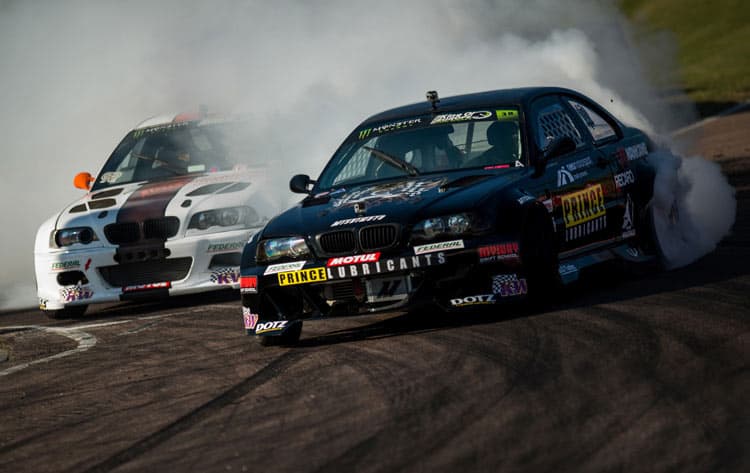
If you’re looking to make upgrades to your drift car, make sure you check out our Tuning Guides, where we’ve compared the most essential aftermarket parts for your needs to help you decide when it comes to choosing the perfect products.
We highly recommend investing some time to check out the wealth of information which can be found on YouTube and similar sites, Keiichi Tsuchiya’s ‘Drift Bible’ will be an essential video to get you on your way.
Now that you’ve perfected the art of drifting, we have no doubt that you’re ready to carry out Naoki Nakamura’s party trick, right?!
If you’re struggling to get seat time and eager to perfect your skills at home, there are several racing simulators which are incredibly realistic for drifting. We highly recommend games such as Assetto Corsa which also features customized versions of your favorite tracks. With a decent setup, which can also include VR, it’s about as close as you’re going to get to the real thing. Plus, you don’t have to worry about expensive fixes and shredding tires!
Good luck, and most importantly – have fun!
Photography and information credits
Drifted would like to extend thanks to the following sources for use of their images and information:


